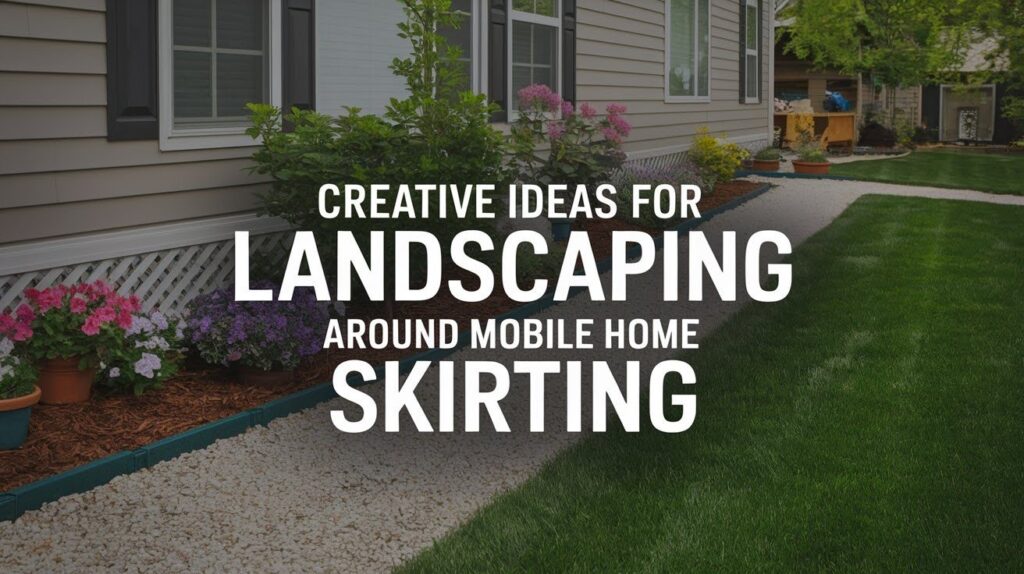Skirting plays a crucial role in mobile home design, serving both practical and aesthetic purposes by concealing the foundation while providing essential ventilation and access to utilities.
However, the area around mobile home skirting presents unique challenges and opportunities for homeowners looking to improve their property’s appearance.
Landscaping around skirting requires careful consideration of maintenance access, proper drainage, and plant selection that won’t interfere with necessary airflow.
Yet these same constraints offer exciting possibilities for creative solutions that work within these parameters.
Well-planned landscaping around your mobile home skirting can significantly improve both function and curb appeal.
The right combination of plants, materials, and design elements transforms utilitarian skirting into an attractive feature that complements your home while maintaining practical accessibility and proper ventilation for optimal performance.
Understanding Mobile Home Skirting and Its Purpose
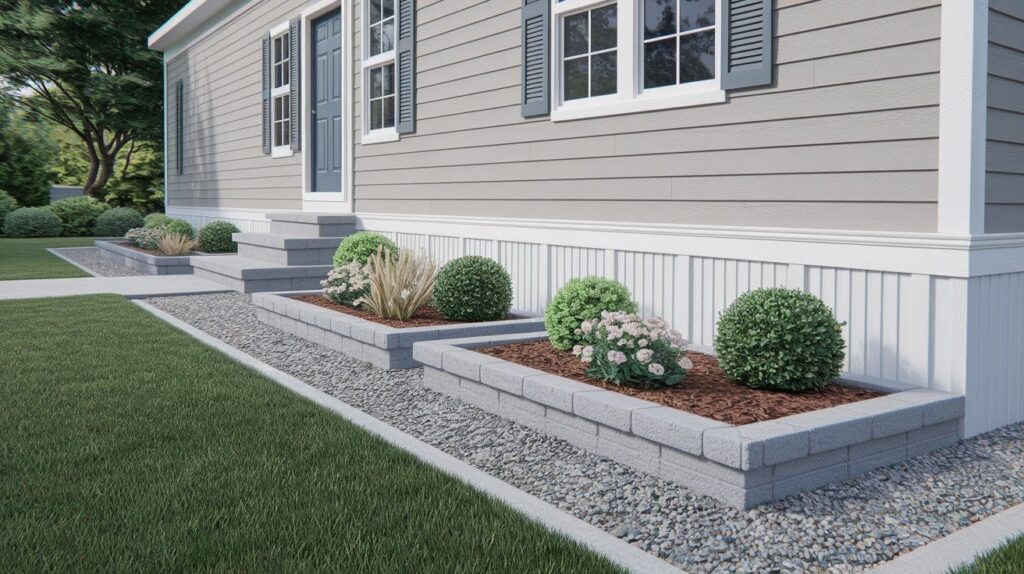
Mobile home skirting is the protective barrier installed around your home’s foundation, covering the space between the ground and floor.
This essential component protects exposed plumbing and electrical systems while creating a finished appearance that integrates your home with the landscape.
Well-maintained skirting provides significant benefits including improved energy efficiency by blocking cold air circulation during winter months, reducing heating costs.
The enclosed space creates valuable storage opportunities for seasonal items and equipment. Aesthetically, quality skirting transforms utilitarian foundations into attractive features that complement your property’s design.
Common skirting materials include vinyl panels offering affordability and easy maintenance, concrete blocks providing durability and insulation, faux stone options creating an upscale appearance, and metal skirting delivering long-lasting performance.
Each material presents different landscaping opportunities and maintenance requirements, influencing your plant selection and design choices for the surrounding area.
List of 11 Creative Landscaping Ideas Around Mobile Home Skirting
Eleven creative landscaping solutions transform mobile home skirting areas using plants, hardscape features, lighting, and decorative elements for improved curb appeal.
1. Add Decorative Shrubs and Green Borders
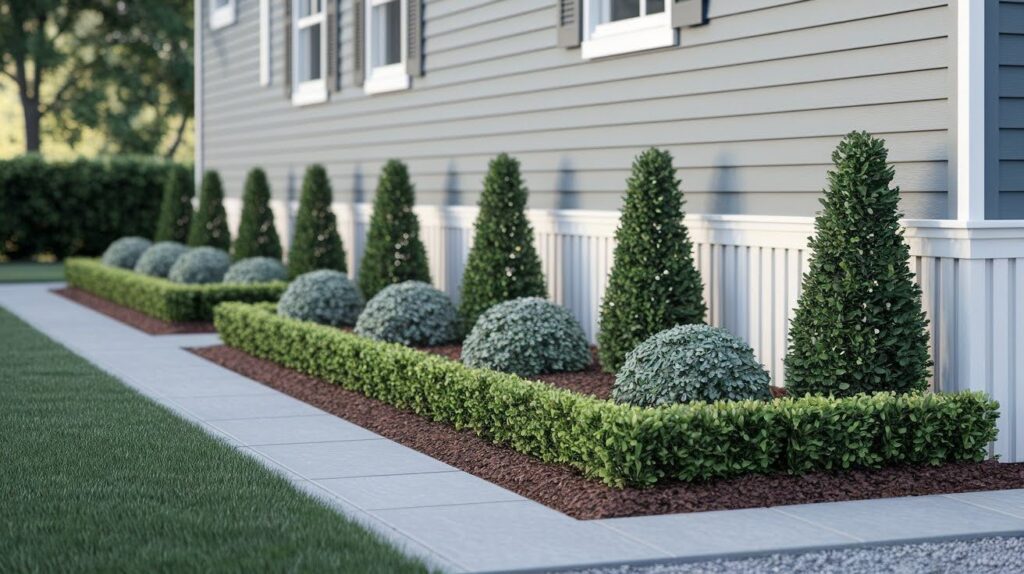
Strategic placement of decorative shrubs creates an effective way to hide or soften visible skirting lines while adding natural beauty to your home’s perimeter.
Low-maintenance plants like boxwood, juniper, or dwarf spirea provide year-round coverage without requiring extensive care or frequent pruning.
These shrubs create visual interest through varying heights and textures while maintaining the necessary clearance for skirting access and ventilation.
2. Install a Flower Bed Border
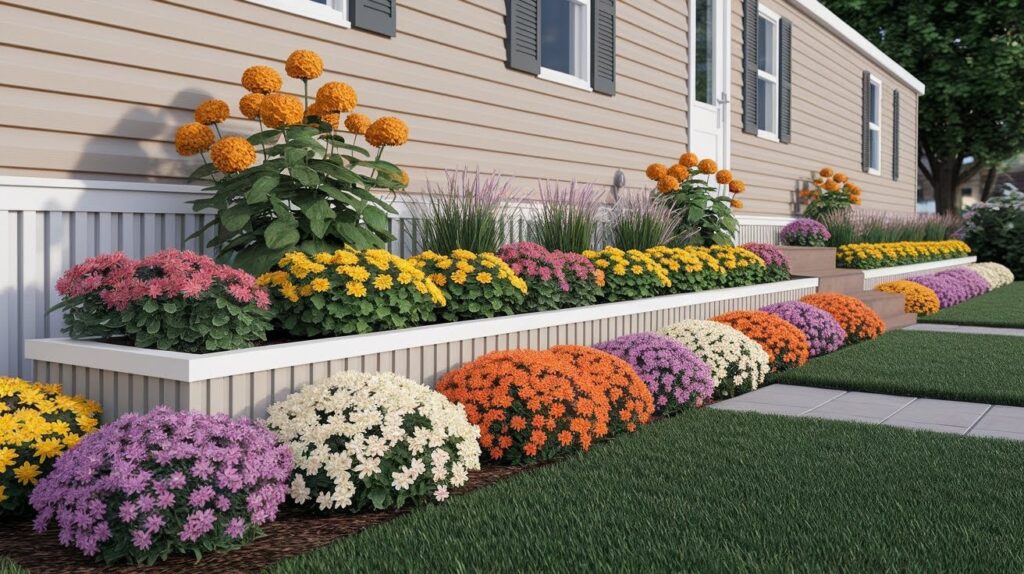
Creating layered flower beds along your home’s base adds vibrant color and seasonal interest to otherwise plain skirting areas.
Design beds with taller plants toward the back graduating to shorter varieties in front, ensuring proper light distribution and visual appeal.
Incorporate seasonal flowers like marigolds and petunias for summer color, followed by chrysanthemums and ornamental kale for autumn displays, maintaining year-round visual interest.
3. Use Rock Gardens and Pebble Edging

Gravel and decorative rocks provide an attractive way to outline skirting while offering practical benefits for drainage and maintenance.
Rock gardens require minimal upkeep compared to traditional plantings, making them ideal for busy homeowners or challenging growing conditions.
Various stone sizes and colors create visual texture while allowing proper water drainage away from your home’s foundation.
4. Create a Raised Planter Box Feature
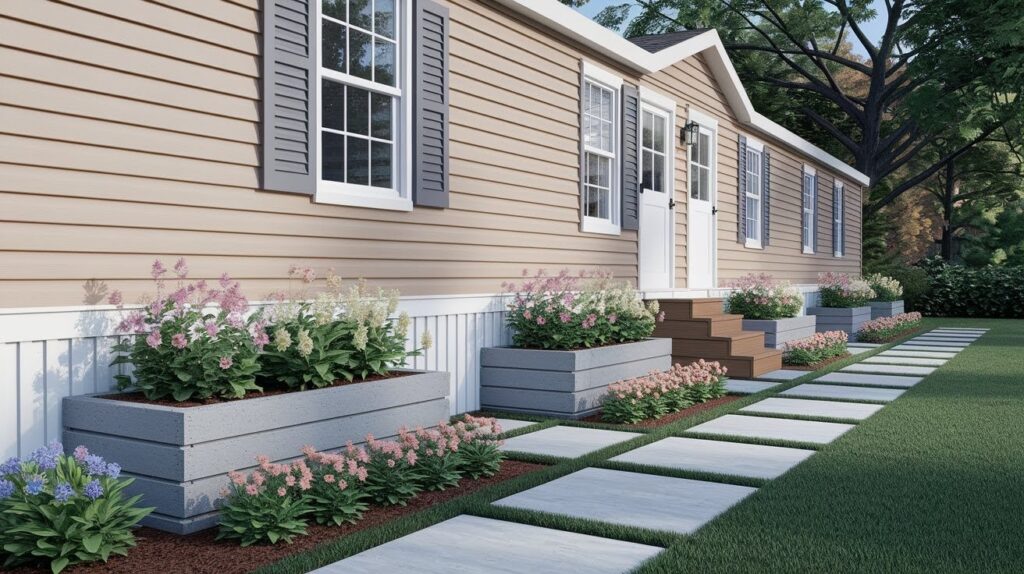
Planter boxes add vertical dimension to flat skirting areas while providing controlled growing environments for flowers and small plants.
Wood, concrete, or composite materials can be selected to complement your existing skirting design and home exterior.
These features create focal points that draw attention upward while concealing lower skirting sections effectively.
5. Incorporate Vertical Trellis Panels
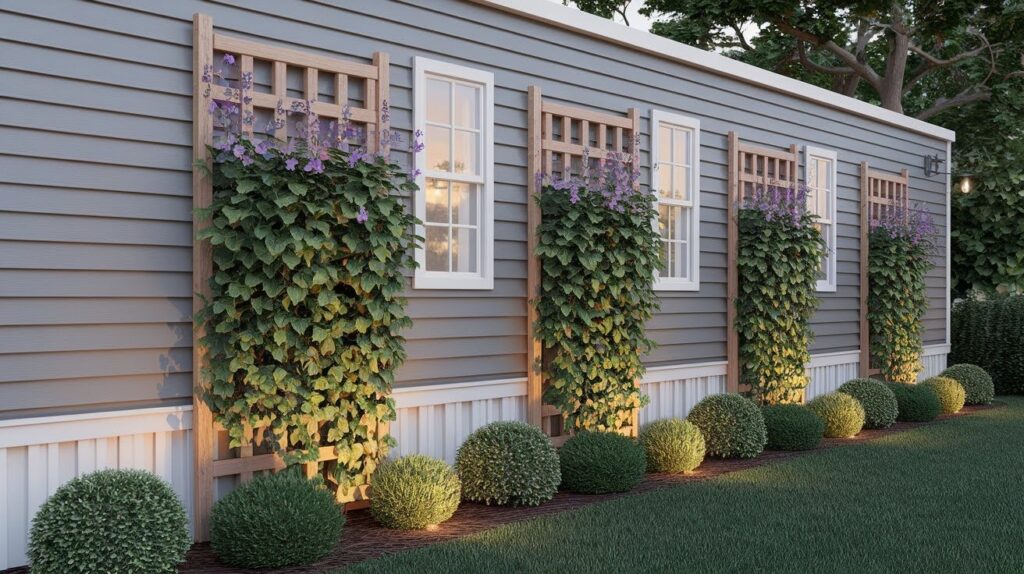
Installing trellis panels near skirting areas creates opportunities for growing vines and climbing plants that add height and natural screening.
Morning glories, clematis, or ivy can transform plain skirting into living walls that provide privacy and aesthetic appeal.
Trellises also create architectural interest and can support seasonal decorations or lighting elements.
6. Add Pavers and Pathways Near Skirted Areas
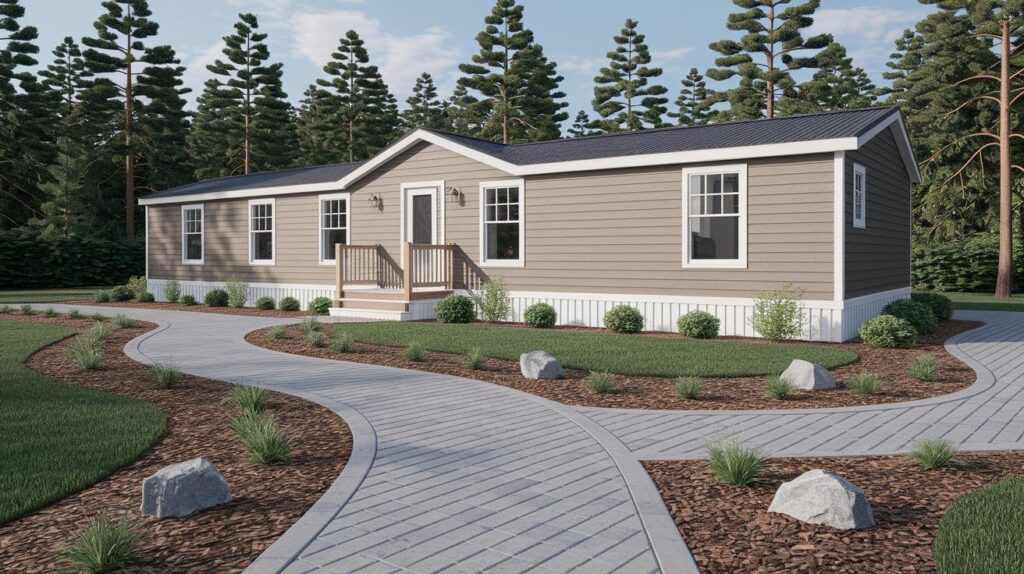
Functional walkways integrate beautifully with skirting while providing practical access around your home’s perimeter.
Mixing materials like stone, brick, and gravel creates visual interest and defines different zones around your property.
Well-designed pathways guide foot traffic while complementing your home’s overall landscape design.
7. Use Decorative Lattice with Plant Cover
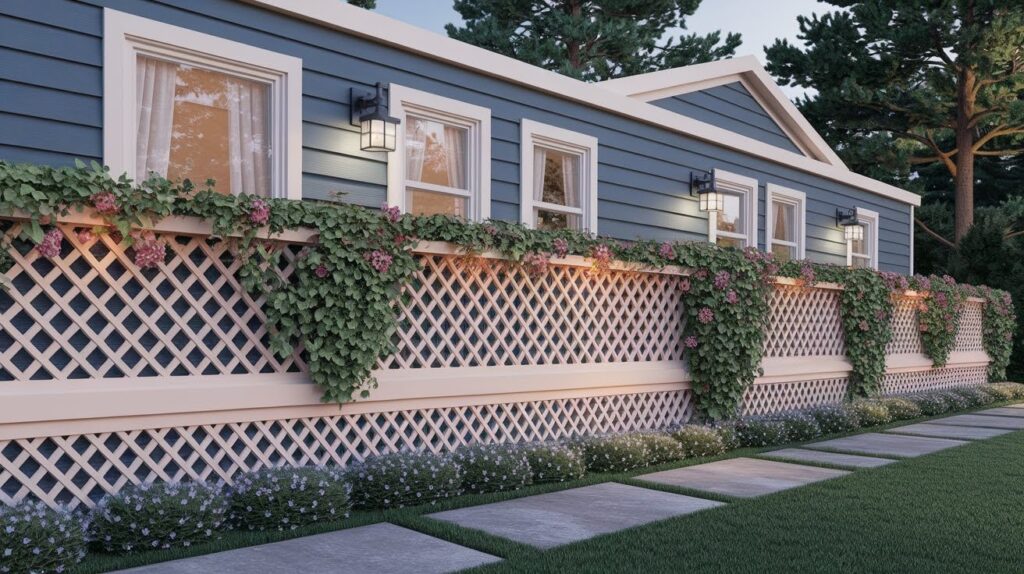
Lattice panels serve as attractive accents that can be paired with climbing plants or integrated lighting for added visual appeal.
These versatile elements provide partial screening while maintaining necessary airflow around skirting areas.
The geometric patterns of lattice work add architectural detail that complements both traditional and contemporary mobile home designs.
8. Install Low Landscape Lighting
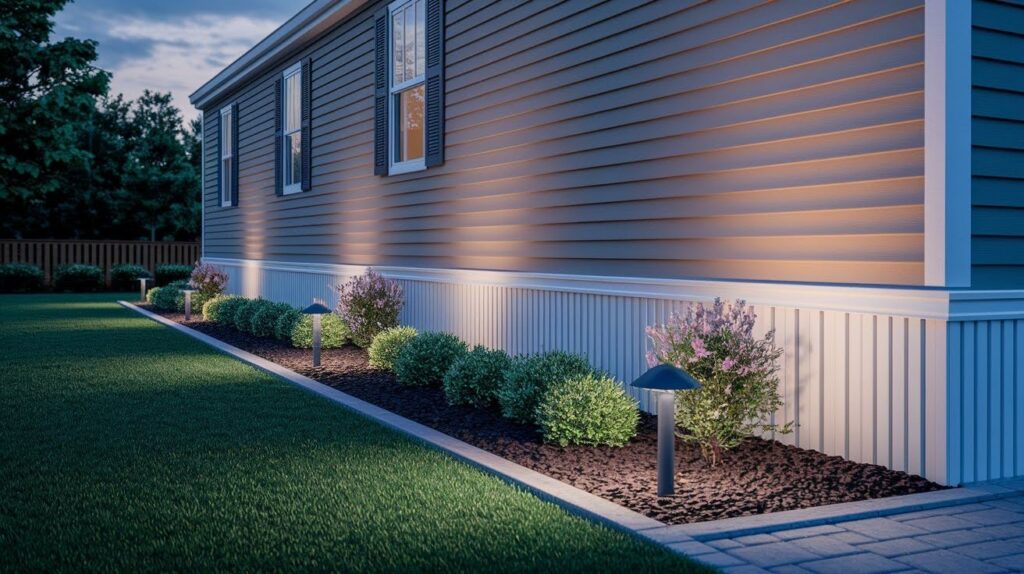
Perimeter lighting highlights your mobile home’s foundation area while providing safety and security benefits.
Solar-powered options offer energy efficiency and easy installation, while wired systems provide consistent illumination and greater control options.
Low-level lighting creates ambiance while drawing attention to well-maintained landscaping around skirting areas.
9. Build a Mini Retaining Wall
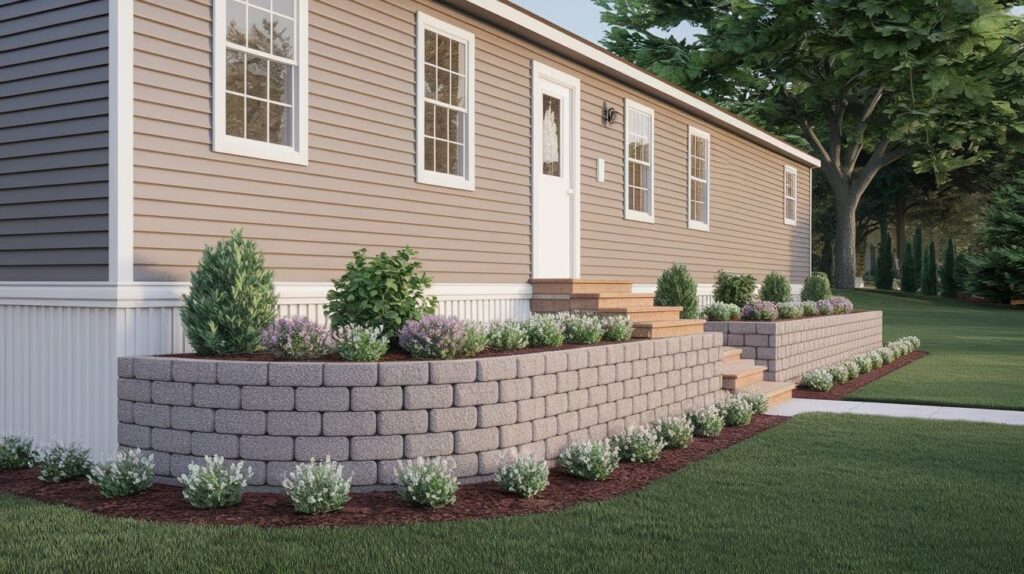
Stone or brick retaining walls add structural interest around skirting while creating definition and visual depth.
These features can incorporate planting pockets for flowers or small shrubs, combining functional landscaping with attractive design elements.
Retaining walls also help manage soil levels and drainage around your home’s foundation.
10. Add Mulch Beds and Edging
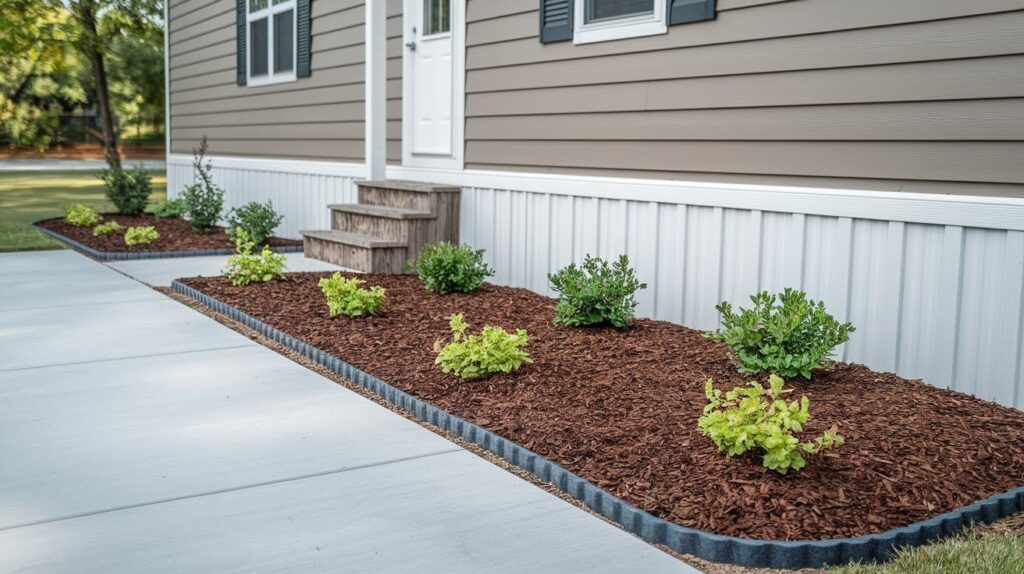
Clean mulch borders provide weed control while creating a polished appearance around skirting areas.
Dark mulch creates striking contrast against light-colored skirting while organic options like bark chips or shredded hardwood offer durability and natural appearance.
Proper edging maintains clean lines and prevents mulch from spreading into unwanted areas.
11. Blend in with Hardscape Features
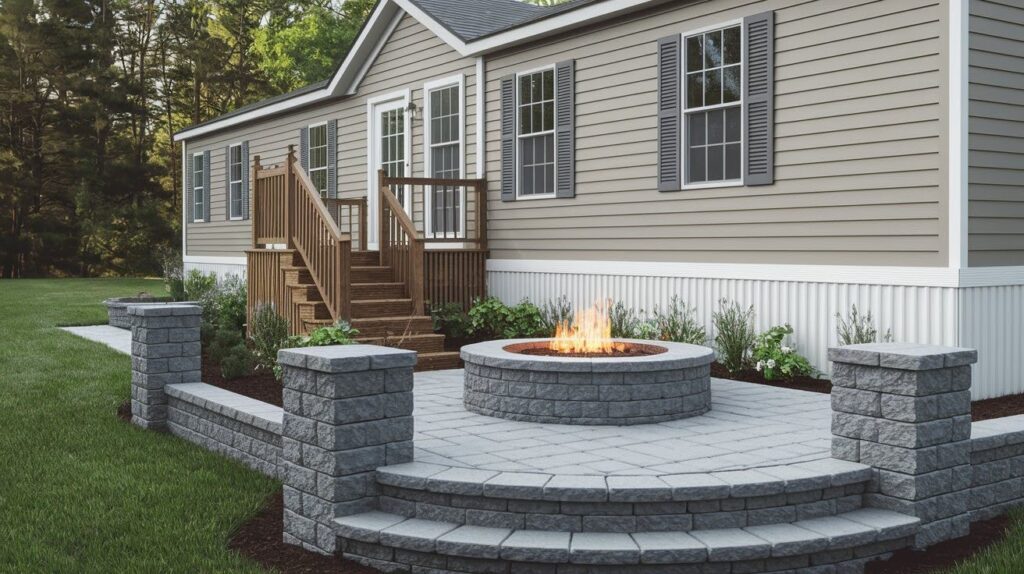
Integrating hardscape elements like steps, patios, or fire pits near skirted areas helps minimize the mobile appearance of your home while creating functional outdoor living spaces.
These permanent features add value and create seamless transitions between your home and landscape, making the entire property feel more established and integrated with its surroundings.
Tips for Designing Around Skirting
- Match landscape materials with existing skirting color and texture to create cohesive, intentional appearance rather than afterthought additions
- Light-colored vinyl skirting pairs well with bright flowers and light mulches, while darker materials complement deeper plant colors and rich soil amendments
- Leave adequate space around vents and access panels to ensure proper ventilation under your home and prevent moisture problems
- Plan pathways or removable landscaping elements near crawl space entrances for routine maintenance and inspections without garden damage
- Choose low-maintenance plant options that won’t require frequent pruning or replacement to reduce ongoing care requirements
- Plan for seasonal color changes using perennial plants supplemented by annual flowers for consistent visual interest
- Factor in winter appearance when deciduous plants lose leaves, ensuring landscape maintains appeal throughout the year
- Consider long-term maintenance requirements when selecting materials and plants for sustained beauty around foundation areas
Final Thoughts
Skirting-friendly landscaping offers numerous benefits that extend beyond simple aesthetics, combining improved curb appeal with practical functionality around your mobile home’s foundation.
These thoughtful design choices create seamless integration between your home and surrounding landscape while maintaining essential access and ventilation requirements.
The key to success lies in blending necessary function with your personal style preferences.
Whether you prefer colorful flower gardens, low-maintenance rock features, or structural hardscape elements, there are solutions that work within skirting constraints while reflecting your unique taste.
Starting small allows you to test different approaches and scale your design over time as budget and experience allow.
Begin with one area or feature, observe how it performs through seasons, then gradually expand your landscaping vision. This measured approach ensures sustainable results that enhance your property’s value and outdoor enjoyment.
Frequently Asked Questions
What plants work best around mobile home skirting?
Choose low-maintenance shrubs like boxwood, juniper, or dwarf spirea that provide year-round coverage without extensive pruning requirements. Avoid plants with aggressive root systems that could damage skirting or interfere with foundation ventilation.
How do I maintain access to vents while landscaping?
Leave adequate clearance around all vents and access panels, typically 2-3 feet minimum for proper airflow and maintenance access. Use removable planters or create pathways that allow easy access without damaging your landscaping.
Can I plant directly against mobile home skirting?
It’s best to maintain some distance between plants and skirting to prevent moisture buildup and allow air circulation. Keep plantings at least 12-18 inches away from skirting panels to avoid potential damage and maintenance issues.
What’s the most cost-effective landscaping option for skirting areas?
Mulch beds with strategic shrub placement offer excellent value, requiring minimal initial investment while providing long-term appeal and low maintenance. Rock gardens are another affordable option that requires virtually no ongoing care once established.
How do I prevent landscaping from making my home look more mobile?
Focus on permanent-looking features like stone pathways, retaining walls, or substantial planter boxes that create visual weight and integration. Avoid temporary or lightweight elements that emphasize the portable nature of mobile homes.

